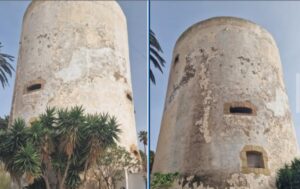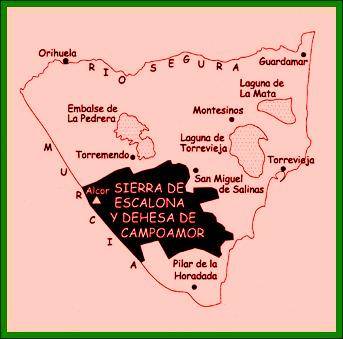Así se desprende de la decisión del ayuntamiento de Orihuela de dejar fuera de la revisión de Bienes Protegidos a los Espacios Protegidos de la localidad, entre ellos el entorno natural de la Dehesa de Campoamor y la Sierra de Escalona. La penosa situación de los bienes de interés cultural de la localidad tras 30 años sin revisar el catalogo, ha llevado al equipo de gobierno a iniciar su revisión urgente.
No obstante, alegando motivos de urgencia, el consistorio ha iniciado la parte cultural (monumentos, edificios,etc) dejando para más adelante, sin dar plazo fijo, lo que se refiere al patrimonio natural y paisaje. El actual catalogo data de 1990, periodo en el que las leyes referentes a patrimonio natural y paisajistico han avanzado significativamente. Estos avances en legislación medioambiental no se verán reflejadas de momento en la normativa local.
Los Ecologistas en contra de que no se incluya el patrimonio natural
La asociación ecologista de la Sierra de Escalona (ASE) se ha mostrado en contra de esta decisión, aunque ha asegurado que presentara alegaciones para que se protejan elementos patrimoniales de la Sierra de Escalona y la Dehesa de Campoamor.
Campana y ladrillos que se caen, BIC en estado ruinoso
Los últimos acontecimientos que han afectado al patrimonio cultural de Orihuela no han hecho más que evidenciar su falta de mantenimiento. Fue el día dos abril cuando la fachada lateral de la Iglesia de las Santas Justa y Rufina tuvo que ser acordonada debido a la caída de parte de la fachada , en tanto el domingo de Ramos se desprendió una de las campanas de la Catedral de Orihuela.
Una oportunidad para la Torre Vigia de Cabo Roig
No obstante, el catalogo podría llegar a incluir elementos patrimoniales de carácter arqueológico, paleontológico, arquitectónico, etnológico, histórico o arqueológico civil y militar del termino municipal adecuándose a los actuales criterios, muy distintos a los que regían en el año 1.990, lo que podría dar una oportunidad para incluir la Torre Vigia de Cabo Roig, actualmente Bien de Interés Autonómico, pero no Bien de Interés Cultural y, en consecuencia, sin la máxima protección.

Orihuela renounces to protect the Dehesa de Campoamor
This is the result of the decision of the Orihuela town council to leave out of the revision of Protected Sites the Protected Spaces of the town, among them the natural environment of the Dehesa de Campoamor and the Sierra de Escalona.
The pitiful situation of the assets of cultural interest of the town after 30 years without revising the catalogue, has led the government team to initiate its urgent revision. However, citing reasons of urgency, the council has initiated the cultural part (monuments, buildings, etc.) leaving for later, without giving a fixed deadline, what refers to the natural heritage and landscape.
The current catalogue dates from 1990, a period in which the laws concerning natural heritage and landscape have advanced significantly. These advances in environmental legislation will not be reflected in local legislation for the time being.

Ecologists against not including natural heritage
The environmental association of the Sierra de Escalona (ASE) has expressed its opposition to this decision, although it has assured that it will present allegations to protect the heritage elements of the Sierra de Escalona and the Dehesa de Campoamor.
Bell and falling bricks, BIC in a ruinous state
Recent events affecting Orihuela’s cultural heritage have only served to highlight its lack of maintenance. It was on the second of April when the side façade of the Church of Santas Justa y Rufina had to be cordoned off due to the fall of part of the façade, while on Palm Sunday one of the bells of Orihuela Cathedral fell off.
An opportunity for the Torre Vigia de Cabo Roig
However, the catalogue could include elements of archaeological, paleontological, architectural, ethnological, historical or archaeological, civil and military heritage of the municipality, adapting to the current criteria, very different from those in force in 1990, which could provide an opportunity to include the Torre Vigia de Cabo Roig, currently an Asset of Regional Interest, but not an Asset of Cultural Interest and, consequently, without the maximum protection.
